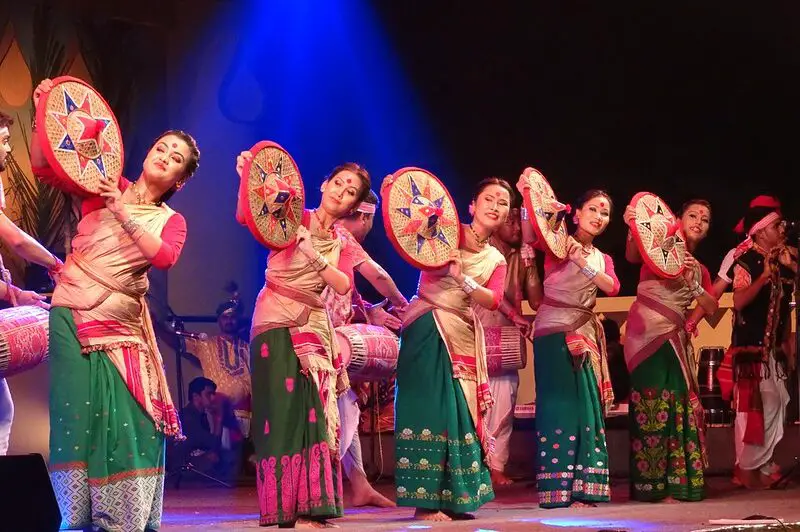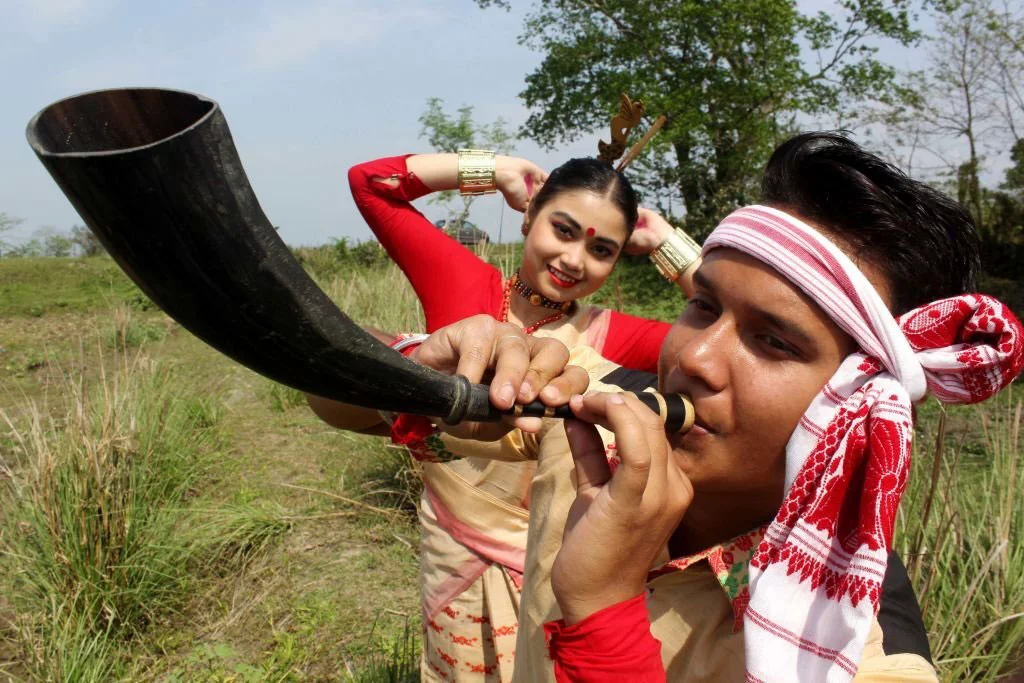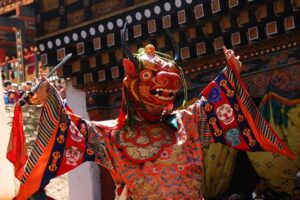Rongali Bihu (Bohag Bihu) is the Assamese New Year festival, which is celebrated with great joy and enthusiasm in Assam and other northeastern states of India. It marks the onset of the agricultural season and is a time to celebrate the arrival of spring, new beginnings, and the renewal of life.
Rongali Bihu is a festival with a predominantly aboriginal origin, blending together elements from Tibeto-Burman and Tai cultures. The festival is usually celebrated in the second week of April, marking the time of harvest historically. It falls on the 14th day of April every year, bringing together diverse native communities of Assam and promoting the celebration of ethnic diversity.
Let’s explore the history, traditions, and customs of Rongali Bihu and what makes it a unique and colorful festival.
History of Rongali Bihu
Rongali Bihu is one of the three Bihu festivals that are celebrated in Assam throughout the year, with the other two being Kongali Bihu (observed in October) and Bhogali Bihu (observed in January). Rongali Bihu falls in mid-April and marks the beginning of the Assamese New Year.

The festival has its roots in ancient times when it was celebrated as a harvest festival by the Ahom dynasty, the rulers of Assam for almost six centuries. The festival was also influenced by the practices of the indigenous tribes of Assam, who worshipped nature and celebrated the changing seasons.
Over time, Rongali Bihu evolved into a secular festival that is celebrated by people of all religions and castes. It is a time to forget past grievances and come together to celebrate the beauty of life and nature.
Traditions and Customs
Rongali Bihu is a three-day festival that is celebrated with great pomp and show in Assam. The festival is marked by various traditions and customs that are unique to the region. Let’s take a look at some of the key aspects of the festival:
- Goru Bihu: The first day of Rongali Bihu is known as Goru Bihu, which is dedicated to the cattle that play a significant role in agriculture. On this day, cows and bulls are bathed and decorated with colorful garlands and vermilion paste. They are also fed special meals made of rice and vegetables. The day ends with a traditional dance called the Goru Bihu, where young men and women dance around the decorated cattle.
- Manuh Bihu: The second day of Rongali Bihu is known as Manuh Bihu, which is dedicated to human beings. On this day, people wear new clothes and visit their relatives and friends to exchange greetings and gifts. They also participate in various cultural events such as singing, dancing, and playing traditional games like tekeli bhonga, buffalo fight, and egg-fight.
- Gosain Bihu: The third and final day of Rongali Bihu is known as Gosain Bihu, which is dedicated to the deities and the Brahmins. On this day, people offer prayers to the deities and seek their blessings for a good harvest season. They also visit the local temples and pay their respects to the priests.

Apart from these three days, Rongali Bihu is also marked by various other customs and traditions that make it a unique and colorful festival. These include:
- Pitha making: Pitha is a type of Assamese cake made of rice flour, coconut, and jaggery. It is a traditional delicacy that is prepared during Rongali Bihu and shared among friends and family.
- Bihu dance: Bihu dance is a traditional folk dance of Assam that is performed during Rongali Bihu. It is a high-energy dance that involves fast footwork, swirling movements, and rhythmic clapping.
- Huchori: Huchori is a traditional musical instrument that is played during Rongali Bihu. It is made of bamboo and has a unique sound that adds to the festive atmosphere of the festival.
- Jeng Bihu: Jeng Bihu is a traditional game that is played during Rongali Bihu. It involves throwing a small stick at a target from a distance and is a test of skill and accuracy.
- Meji making: Meji is a traditional structure made of bamboo and wood that is built on the night of the last day of Rongali Bihu. It is lit on fire to symbolize the end of the old year and the beginning of the new year.
Significance of Rongali Bihu
Rongali Bihu is a significant festival for the people of Assam as it marks the beginning of the agricultural season and the renewal of life. It is a time to forget past grievances and come together to celebrate the beauty of nature and the joy of life.

The festival also has a cultural and social significance as it promotes the unity and diversity of Assamese society. People from all religions and castes come together to celebrate the festival, and the traditions and customs associated with Rongali Bihu reflect the rich cultural heritage of the region.
Moreover, Rongali Bihu is also an important occasion for the promotion of Assamese art, culture, and literature. The festival provides a platform for artists and performers to showcase their talent, and various cultural events are organized during the festival to promote the traditional art forms of Assam.
Guinness World Record With Largest Bihu Performance
Assam made history by breaking the Guinness World Record for “The largest Bihu performance in a single venue”, as over 11,000 Bihuwotis and dhuliyas came together in a grand effort. The achievement was made on April 13 at Sarusajai Stadium in Guwahati, where the participants aimed to set a new record for the largest Bihu dance performance at a single venue.
Performers in India's northeastern Assam state set a new Guinness World Record for the largest live group performance of 'Rongali Bihu' festivities pic.twitter.com/wgN4YyCSOV
— Reuters (@Reuters) April 15, 2023
Along with the record-breaking feat, the state government was also presented with the certificate for the ‘Assamese Gamusa’, which had received the recognition of GI tag.
Rongali Bihu is a unique and colorful festival that reflects the rich cultural heritage of Assam. The festival is marked by various traditions and customs that are unique to the region, and it provides a platform for the promotion of Assamese art, culture, and literature.
(To know more about Assam State Tourism check the link here.)






